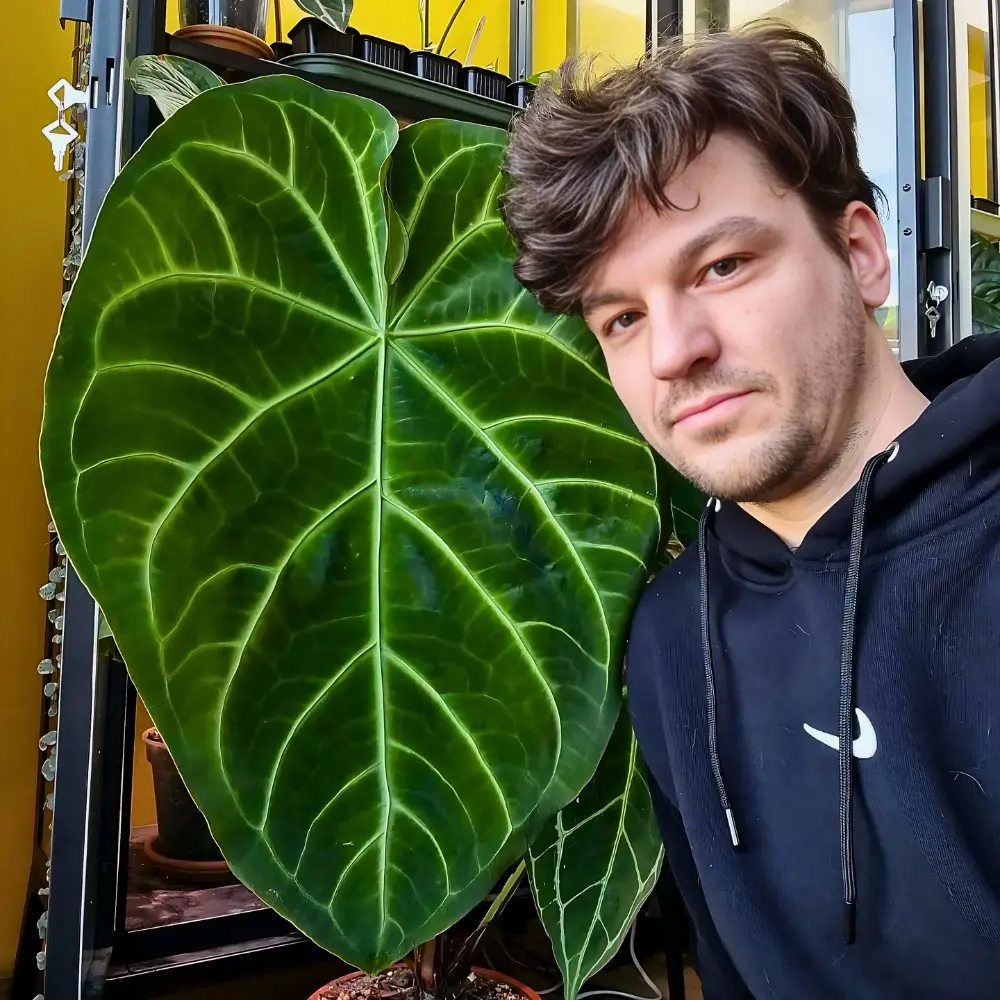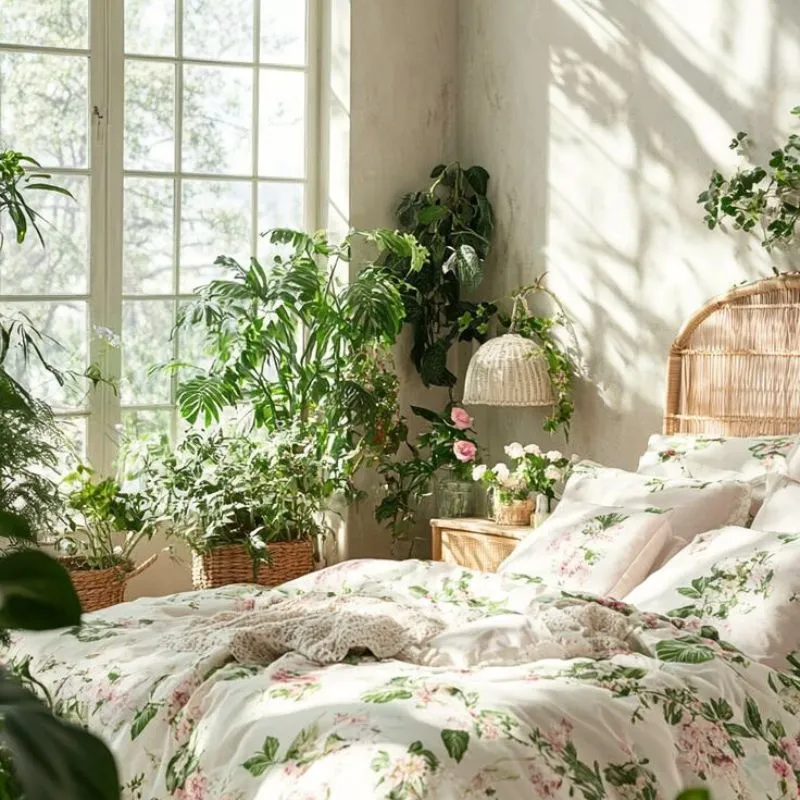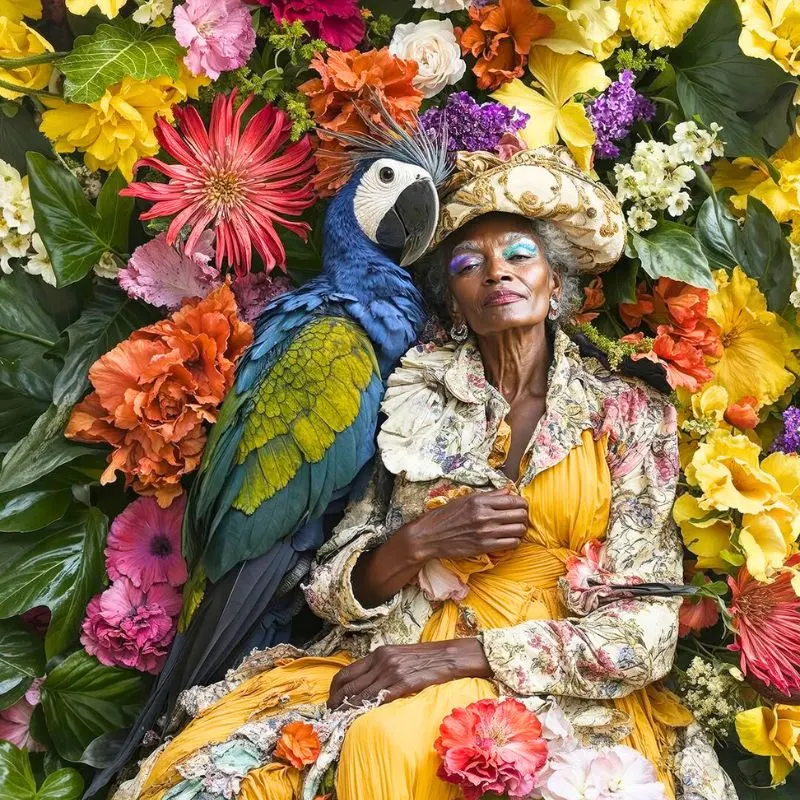This article explores how nature inspires sustainable fashion, from whimsical prints mimicking flowers and animals to ethical manufacturing practices that emulate closed-loop ecosystems. It advocates that consumers can guide the industry toward circular models focused on renewable materials, transparency, durability, and recycling by supporting brands aligned with these ecological values. Ultimately, nature provides the ideal template for innovative ethical clothing production.

Drawing Inspiration from Nature
Drawing inspiration from nature is like tapping into an eternal reservoir of creativity. The intricate dance of leaves in the wind, the vibrant hues of a sunset, or the delicate petals of a flower—all serve as muses for artistic expression. Nature's patterns, textures, and color palettes ignite the imagination, influencing various forms of art, from painting to design.
It fosters a profound connection between the artist and the environment, encapsulating the essence of the changing seasons and the beauty that surrounds us. Whether recreating landscapes or infusing organic elements into creations, nature's influence is an endless wellspring of inspiration, grounding artistic endeavors in authenticity and timeless beauty.
Study of Natural Forms and Textures
Have you ever really looked closely at a flower or leaf and admired its intricate patterns and textures? Those natural designs have actually inspired clothing and fabric for centuries! Before the age of photography, artists and designers would study plants and animals firsthand and illustrate them in books. They paid attention to every tiny detail, like the spiral inside a seashell or the spots on an exotic butterfly. When woven or printed onto fabric, those natural shapes and colors brought a little bit of the outdoors into people's wardrobes.
These days, sustainable fashion tries to copy nature's zero-waste approach. For example, the threads spiders use to spin their webs are incredibly strong yet flexible. Researchers are now mimicking spider silk to make a new biodegradable fabric! It just shows that Mother Nature really does know best when it comes to efficient and ethical design.
Incorporating Natural Motifs into Clothing
Back in the Victorian era, flower pressing was a popular hobby, with people assembling ferns, seaweed, and other plants into albums. Fabric designers at the time incorporated many of those same botanical motifs into their patterns. Today, sustainable brands are bringing back the tradition of taking inspiration directly from nature. With advancements in digital printing, they can accurately reproduce images of plant leaves, bark, and feathers to make eye-catching prints.
Going back even further in time, wealthy individuals in the Middle Ages would keep exotic pets like monkeys and parrots. Fashion reflected people's curiosity and fascination with those unusual creatures. Clothing was embroidered with monkeys, and ermine stoles (a type of weasel) were all the rage. Now, sustainable designers are ensuring any animal materials are ethically sourced. For instance, ostriches are plucked while they are still roaming free on farms. The feathers are then dyed bright colors to make fluffy boas or fringe for dresses.
Showcasing Sustainability Through Clothing Tags and Labels
In an era of prioritizing environmental consciousness, showcasing sustainability through clothing tags and labels has become a powerful trend. Brands are leveraging these small, often overlooked details to communicate their commitment to eco-friendly practices. Innovative materials, such as recycled paper or plant-based inks, grace these tags, serving as a visual testament to the brand's dedication to reducing environmental impact.
Moreover, informative labels educate consumers on the garment's eco-friendly attributes, fostering a sense of transparency and trust. This conscientious approach not only aligns with the growing demand for sustainable fashion but also empowers consumers to make environmentally responsible choices, one clothing tag at a time.
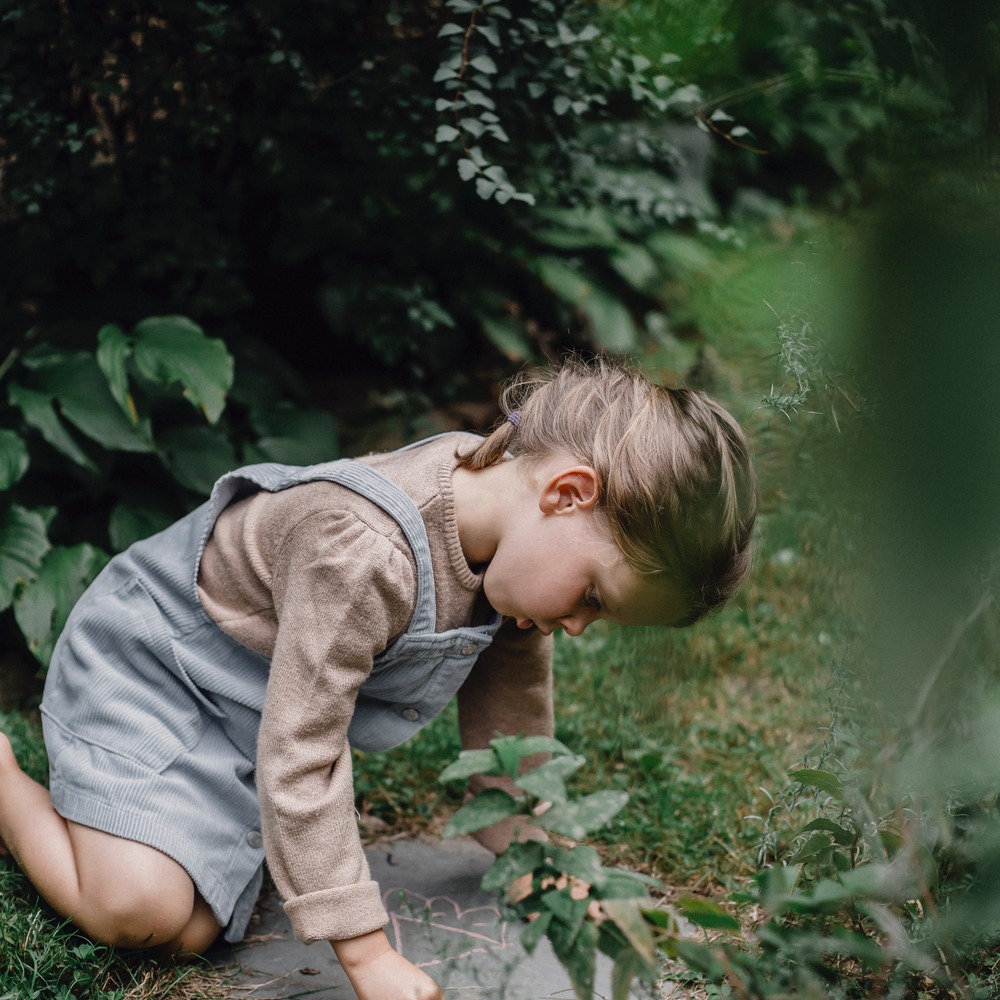
Communicating Ethics and Eco-Credibility
Fabric labels and care tags sewn into garments serve an important purpose beyond just instructing how to properly wash and dry items. They also provide a branding opportunity for fashion companies to highlight their use of organic materials and ethical manufacturing. Certain established labels like Global Organic Textile Standard (GOTS) indicate that goods were produced sustainably from start to finish. Seeing such a certification logo assures consumers their purchase aligns with green values without having to do extensive research.
Brands can also use tags to proactively define niche terms that may be unfamiliar to the average shopper. Explaining the meaning behind phrases like "upcycled" and "carbon neutral" paired with supporting specifics helps establish credibility. For instance, a brand could note "This dress was made in a net-zero emissions factory powered by rooftop solar panels and hydroelectric turbines." Simple clear language educates customers so they can recognize legitimate sustainable efforts.
Sustainable Production Processes
Sustainable production processes are a vital paradigm shift in industry, emphasizing responsible practices to minimize environmental impact. From raw material sourcing to final product delivery, these processes prioritize eco-friendly alternatives, reducing carbon footprints and promoting resource efficiency. Incorporating renewable energy sources, waste reduction, and ethical labor practices, sustainable production strives to balance economic viability with ecological responsibility.
Utilizing Agricultural Waste
You might be surprised to hear that rich brown and green dyes used on sustainable clothing can come from materials like almond shells and rosemary leaves! Known as biosynthetic dyes, these pigments make use of agriculture waste products that would normally just end up in landfills. The materials provide vivid natural hues for coloring denim jeans and casual apparel. Because no additional farmland needs to be set aside strictly for dye production, there is no competition with essential food crops. It is a very efficient method where nothing goes to waste!
Responsible Manufacturing
An important aspect of sustainable clothing production is using processes that minimize environmental impact at every stage. For instance, opting for natural dyes over synthetic petroleum-based colors reduces toxin pollution in waterways near factories. Solar panels provide the energy to run sewing machines and laser fabric cutters instead of fossil fuels. Workers inspecting and packing orders are paid living wages so they can afford proper housing and healthcare.
Essentially, ethical fashion aims to mirror the hyperlocal closed-loop ecosystems found abundantly in nature. Resources are used extremely efficiently then recycled back into the same system once the components reach the end of their lifespan.
Transparent Supply Chains
Transparent supply chains are a paradigm shift in business, emphasizing openness and accountability. In a world increasingly concerned with ethical sourcing and sustainability, transparency ensures that every step of a product's journey is visible. From raw materials to manufacturing, transportation, and delivery, companies are opening their operations to scrutiny.
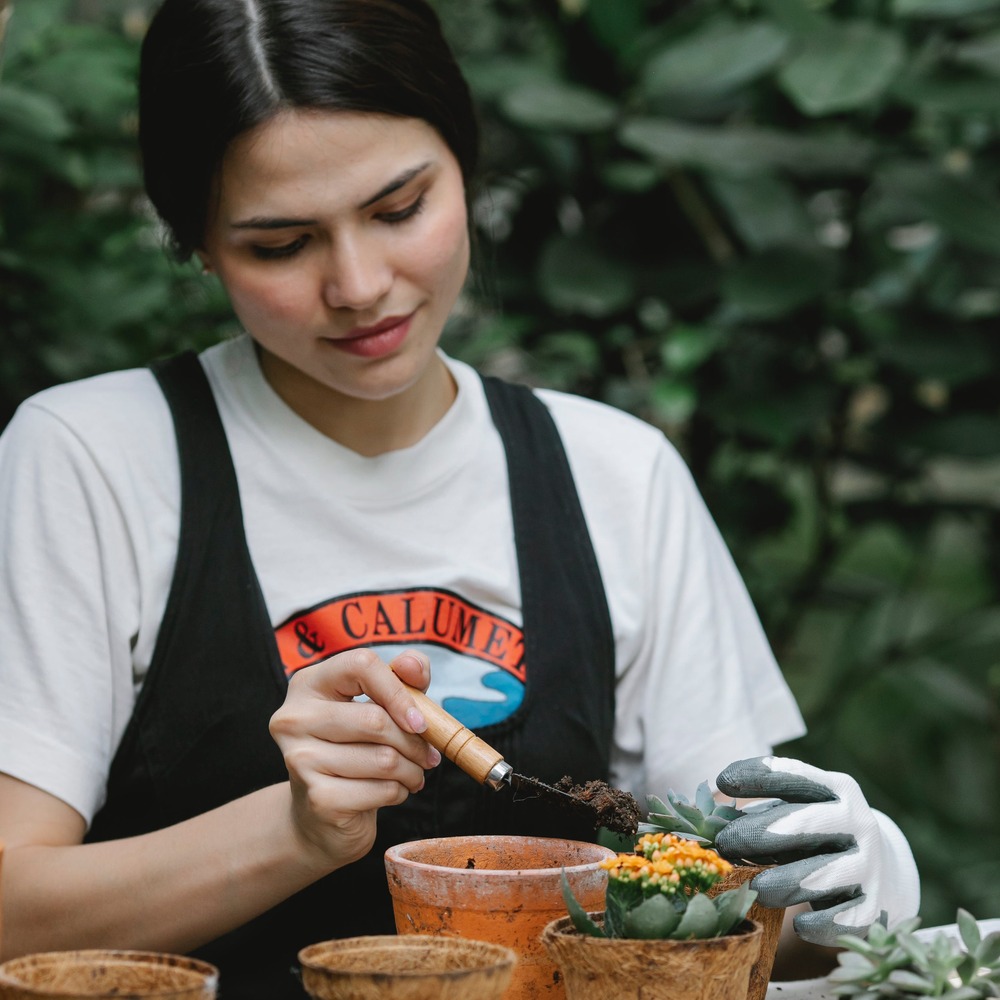
Tracing Materials from Source to Finished Product
Have you ever wondered about the true origins of the clothes you buy? Where was the cotton grown, how did it get turned into thread and then woven into the fabric before becoming the t-shirt now sitting in your dresser? When you choose sustainable fashion brands focused on full transparency, you have the ability to trace the entire supply chain journey!
Nowadays, clothing items may come with a tag containing a QR code or near-field communication (NFC) chip. Simply scan the code with your smartphone camera or tap the chip to pull up detailed information. You can view facts like what farm grew the organic dyes, which textile mill spun and wove fibers from hemp plants, and what fair trade factory stitched the final shirt. Knowing the human and environmental impact behind the things you buy allows you to make ethical purchases aligned with your values.
Providing Consumers with More Choices
Voting with your wallet is an important way to drive positive change in the fashion industry. Selecting organic cotton over cheaper fast fashion made from polluting petroleum-based synthetics signals to brands that consumers care about ecological impact. Seeing that information about fabric sources and working conditions is what sways buying choices may also incentivize more companies to clean up their supply chains. You can encourage the spread of ethical and eco-friendly practices by actively prioritizing sustainable options.
Preserving Resources Through Durability and Recycling
Preserving resources through durability and recycling is a paramount approach in sustainable living. By opting for durable products, we minimize the need for frequent replacements, thereby reducing the demand for raw materials and energy used in manufacturing. Embracing durability also contributes to waste reduction, as long-lasting items generate less disposal.
Recycling, on the other hand, transforms waste into valuable resources, mitigating the environmental impact of discarded materials. As we prioritize durability and recycling, we actively participate in the circular economy, promoting responsible consumption and production practices. This collective effort fosters a healthier planet, ensuring that resources are conserved for future generations.
Designing Garments for Longevity
Fast fashion brands pump out cheaply-made clothing intended to be worn for a season and then discarded, filling up landfills in the process. Choose instead sustainable pieces built from high-quality materials created to last for years with proper care. Focus your wardrobe on a small number of versatile timeless classics over continually chasing trends. Then supplement with a few statement items purchased second-hand.
Check fabric tags to see if materials can be composted or recycled before deciding what to do with items that are worn out. If possible, bring old clothes to textile recycling centers where they will be broken down and respun into new fabrics. Consider learning basic sewing skills like stitching split seams or replacing buttons so you can mend beloved pieces and extend their usable lifespan.
Closing the Loop with Circular Systems
In nature, the concept of waste does not exist Decomposing organic matter gets converted into fertile soil that then nourishes new plant growth. Fashion can similarly recapture resources rather than constantly extracting brand-new materials. For instance, used cotton, hemp, wool, and cashmere garments can be shredded and spun into fresh yarn without any loss of quality.
You can also participate in clothing swaps where items are traded rather than thrown out so everyone ends up with "new-to-them" pieces without anything additional being produced. When you do feel like trying different styles, shop for second-hand threads from consignment stores and peer-to-peer online marketplaces first before resorting to newly manufactured apparel.
Nature as Inspiration for Innovative Fabrics and Prints
Sustainable fashion designers take cues from the natural world not only for patterns but also for materials themselves. For example, fibers can be spun from cellulose derived from sustainably harvested trees, fermented bacteria, mushrooms, and agricultural food byproducts that would otherwise go to waste. Some fabric even incorporates lightweight eucalyptus cinerea pulp or milk protein for silky softness and breathability.
Dyers extract rich non-toxic pigments from colorful plants, fruits and flowers. Vibrant turquoise hues come from the Apache Plume shrub while maroon shades are sourced from foraged black walnuts. Such botanical dyes leave behind no chemical residue compared to synthetic versions and often have added skin and hair benefits from nutritive plant compounds. Ultimately, nature provides a wide color palette free of hazardous toxicity.
Taking Textile Inspiration from Rainforests and Reefs
In addition to supplying raw materials, the diversity of the natural world generates no limit of pattern possibilities too. Tropical foliage with contrasting shapes and vein structures translate beautifully into intricate printed fabrics. Rainforest treetops and underwater reef scenes work wonderfully as landscape artwork digitally transferred onto flowy dresses. Flocks of abstract birds in flight or schools of colorful fish make for graphic all-over prints.
There is no shortage of remote untouched ecosystems yet to be explored for future textile motifs also. As technology like drones and submersibles improves access to rugged terrain, more rare creatures and exotic plants will undoubtedly find their way onto fashions. Nature's creative genius serves as the ultimate source of innovative designs.
Seeking Non-Violent Alternatives to Feathers and Fur
For decorative and insulating textures historically derived from birds and mammals, innovative alternatives now exist without exploiting animals. Elegant faux feather boas can be fabricated from softly curled recycled plastic bottles. Dimensional chunky knits replicating fur utilize renewable plant-based synthetics like modal rather than yak hair.
Some brands take inspiration from fibers found in nature but not attached to animals. Buoyant silk-like kapok filling harvested from rainforest seed pods creates incredible loft and warmth for winter coats. Company options for fluffy trim or tactile fabric effects are plentiful without requiring live plucking or trapping. Ultimately, designers focused on sustainability prioritize fabrics and prints that are whimsical, not wicked.
To Summarize
As consumers, people have the power to guide the industry toward a more sustainable future through mindful purchasing choices and care for the items people bring into their lives. Vote for transparent supply chains and circular resource flows by choosing organic fair trade fashion focused on longevity and recycling. Together, consumer actions can help clothing production bloom rather than pollute!


